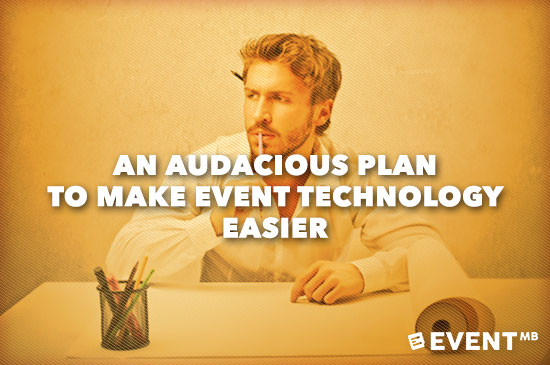It’s safe to say that all software, all the tools needed to build the software, and even all the physical resources (servers, operating systems, connectivity) required to operate the aforementioned software and tools are moving to the cloud. It is now technically possible to create a single platform that allows event planners to perform virtually any task imaginable through a single interface or dashboard. Should a person, company, or organization actually build such a platform, it could be referred to as Event Technology as a Service (ETaaS) and it could change the industry.
What is a Cloud Model?
The National Institute of Standards and Technology (in the US) is a federal agency that works with companies to advance measurement science, standards, and technology. It narrowly defines the essential characteristics of the cloud model. Here’s how they might be placed in the context of event planning:
On-demand self-service: Planners can access computing capabilities online as needed automatically without requiring human interaction with a service provider.
Broad network access: Capabilities are available over the Internet using all types of devices, including smartphones, tablets, laptops, and desktop computers.
Resource pooling: The technology provider’s computing resources (storage, processing, memory, and network bandwidth) are pooled so that different planners can use them for different tasks and there will always be enough resources available.
Rapid elasticity: Planners can use as much or as little of the cloud capabilities as they want and the cloud will scale up or down as needed (think a spike in event registrations).
Measured service: Cloud capabilities can be monitored, controlled, and reported so that theoretically planners would only have to pay for what they use when they use it.
What Event Technology as a Service Would Look Like
In an ETaaS model, event planners could perform a range of logistical tasks (project management, registration, vendor management, exhibit booth sales, post-event surveys, and more) whenever they wanted; through a single portal; using any device; and with access to unlimited computing resources, the ability to scale up or down, and the option to pay as they go.
Of course, the truly ambitious ETaaS providers could expand this core set of capabilities to include any number of other work streams including event-centric marketing automation or customer relationship management (complete with templates and customization), or it could address attendee, exhibitor, sponsorship, and speaker management processes.
Reaching the Cloud Nirvana
To be clear, there are event-technology platform providers TODAY that are halfway to the ETaaS model. They do provide on-demand, self-service (through a platform dashboard), multi-device, scalable access to their software. But they have yet to go the last mile. Here’s how they differ from a true cloud-inspired ETaaS:
– Existing companies sell services in bundles and modules. Their customers pay a fee for the bundle whether they use all the capabilities or just one. In an ETaaS model, planners could use any service, any time and pay only for what they use (think data plans for mobile phone usage).
– Today’s horizontal event-software providers (vs. vertical providers of apps such as conference-directory mobile, registration, check-in, or volunteer management apps, etc.) can only appeal to customers who have sizable budgets (arguably a relative concept). Any planner who has a need—even if it’s only one time—can use any part of an ETaaS platform affordably.
– Current platforms intentionally limit themselves to the main, foundational pillars of event planning and stay away from automating the smaller tasks. In an ETaaS ecosystem, a much broader range of tasks would be included, and because they would be compatible with all other apps in the platform, planners could easily move from one capability to the next and still maintain access to the same data set.
There are at least three ways an ETaaS model could be realized. Existing software providers that already have a substantial cloud-based presence and a wide variety of capabilities could go to the next level: sell services using a pay-as-you-go model, unbundle, and add capabilities. A third-party intermediary could assemble and manage (using standard application programming interface protocols) an app ecosystem using existing standalone cloud-based applications. A trade association could buy, assemble, or build an ETaaS platform and sell access as a member benefit.
Who’s In?
Building an ETaaS platform is a big, audacious idea. It will have its proponents as well as its detractors and will certainly require resources (financial and intellectual). But for the person, company, or organization that succeeds in creating the mother of all event-technology platforms there will be rewards: access to many more customers (both professional and nonprofessional event planners), more data byproducts, and market dominance (Google anyone?). ETaaS would make automation more accessible to professional event planners and expose nonprofessional planners to the practice and profession of event planning.
In Conclusion
There are reasons why many event planners shy away from automation. In addition to the learning curve – a time suck for many busy planners – software is expensive and unwieldy (you have to buy a Ferrari, even if you only need a Volkswagen). It’s time for an all-encompassing platform that is easy to operate and inexpensive to use. A Cloud delivery model could provide planners with such a solution. It is an idea whose time has come.
